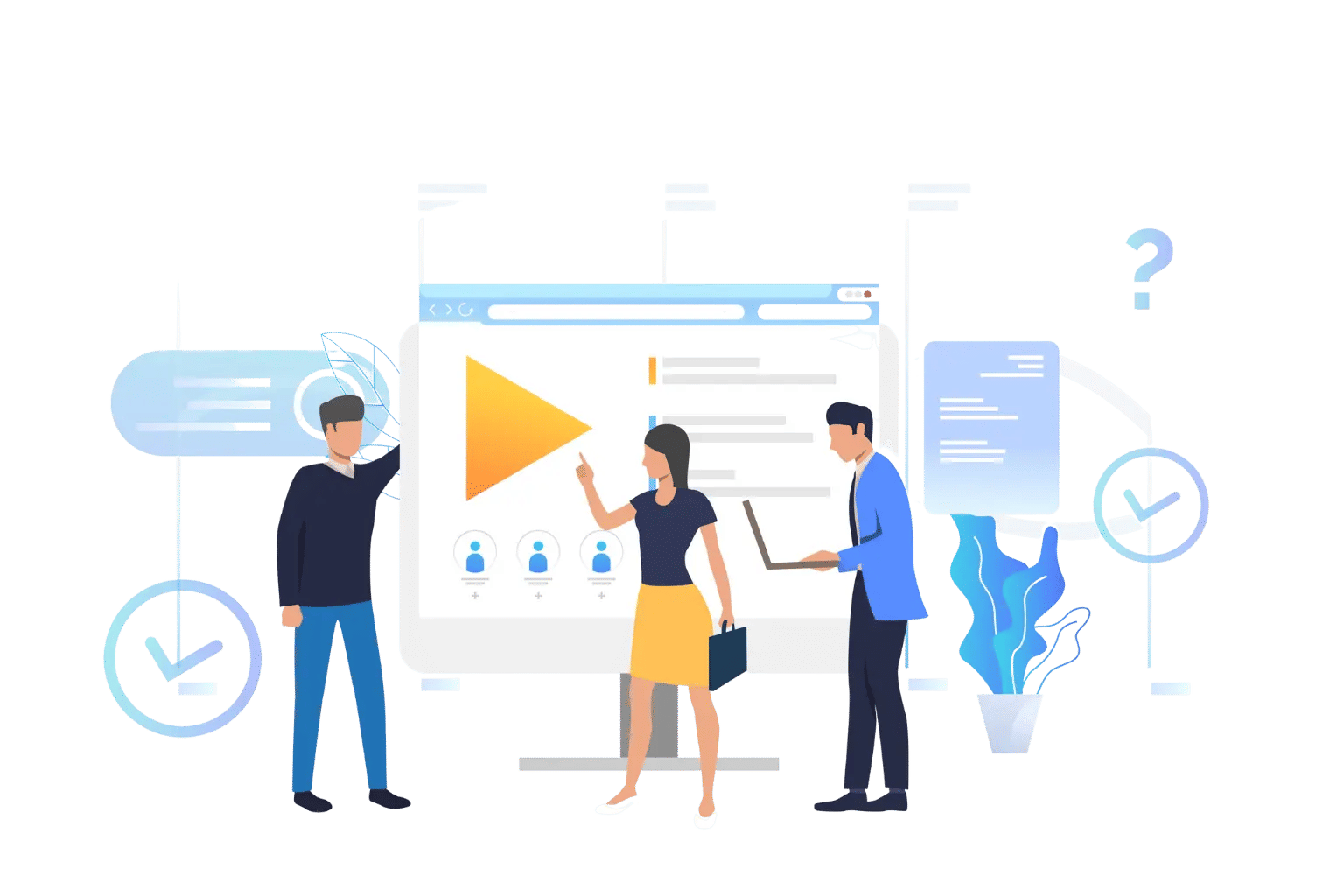
Onboarding is more than a simple formality it lays the foundation for an employee’s entire journey within your organization. Research shows that companies with a structured onboarding process achieve 82% higher employee retention, proving its direct impact on satisfaction, engagement, and long-term productivity.
By leveraging the right strategies and tools such as employee onboarding software you can design a seamless experience that reduces turnover and accelerates success. In this guide, we’ll explore 7 proven onboarding best practices to help new hires feel empowered, engaged, and aligned with your company’s culture from day one.
✨
Quick Read
Summary generated by AI, reviewed for accuracy.
Effective onboarding is crucial for boosting employee engagement, retention, and productivity. By following onboarding best practices, organizations can personalize experiences, automate processes, foster connections, and provide continuous learning opportunities for new hires.
Structured onboarding plans with clear expectations, regular feedback, and performance milestones help employees integrate smoothly into the company culture. Measuring and optimizing onboarding effectiveness ensures a seamless, long-term impact, while tools like employee onboarding software can simplify the process and enhance results.
1. Personalize the Onboarding Experience
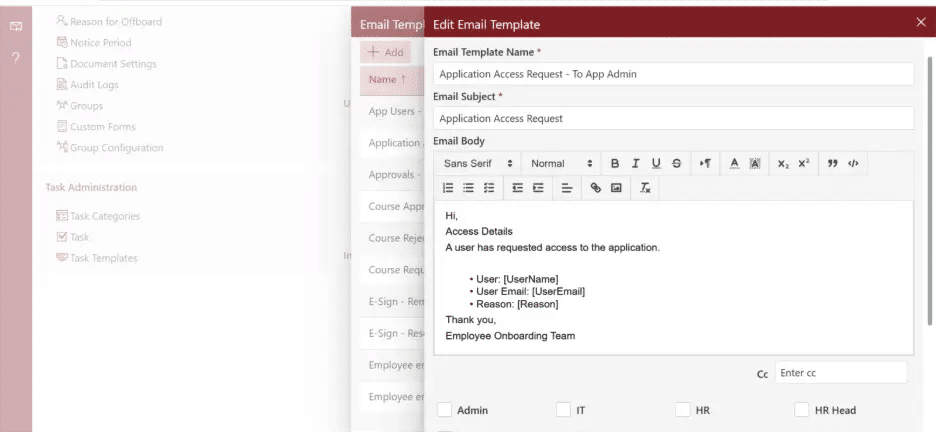
A one-size-fits-all onboarding process can feel impersonal and disengaging. Following onboarding best practices and personalizing the experience helps new hires feel valued and connected to the organization, boosting morale and increasing retention.
Tailored onboarding aligns with the new hire’s role, background, and preferences, creating a welcoming and supportive environment from day one. By investing time in personalizing the process, you show new employees that they are more than just a number and that their unique contributions are recognized.
Why It Matters:
Personalized onboarding fosters trust and makes employees feel more comfortable, which leads to higher engagement and long-term success. When employees feel understood and supported from the start, they are more likely to stay and thrive within the organization.
How to Implement It:
Assign Mentors or Buddies
- Pair new hires with a mentor who can guide them through the early days, answer questions, and offer support. This creates a sense of community and helps them feel less isolated.
- Encourage mentors to schedule regular check-ins during the first 90 days, ensuring consistent support and trust-building.
Personalize Welcome Messages
- Send a customized welcome email introducing the new hire to the team and company culture. Personal touches, like mentioning shared interests or mutual connections, can make a big difference.
- Include a short video message from the manager or CEO to make the greeting more personal and engaging.
Align Company Values with Their Role
- Connect the company’s values directly to the new hire’s position, highlighting how they contribute to the organization’s goals. This ensures they understand their impact on the company’s success.
- Share real-life success stories of employees who embodied these values to inspire the new hire.
Tailor Onboarding Schedule
- Customize the schedule to suit the employee’s role, with relevant training, tools, and early projects that are meaningful. This helps them hit the ground running.
- Add flexible learning modules so employees can revisit training at their own pace for better retention.
Personalized Onboarding Portal
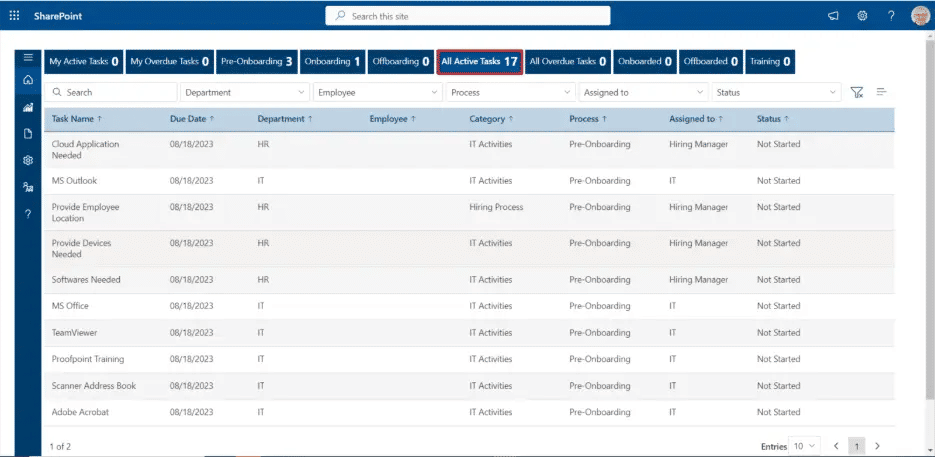
- Provide a portal with resources specific to the new hire’s role and team. This could include training videos, documents, and key contacts, all aligned with their responsibilities.
- Add interactive FAQs or chat support within the portal to answer common questions in real time.
Welcome Kits
- Offer personalized gifts or welcome kits to make the new hire feel appreciated. Small gestures like a personalized note or company swag go a long way in making them feel at home.
- Include practical items such as branded stationery, desk accessories, or digital vouchers to support their day-to-day work.
2. Automate and Digitize Onboarding
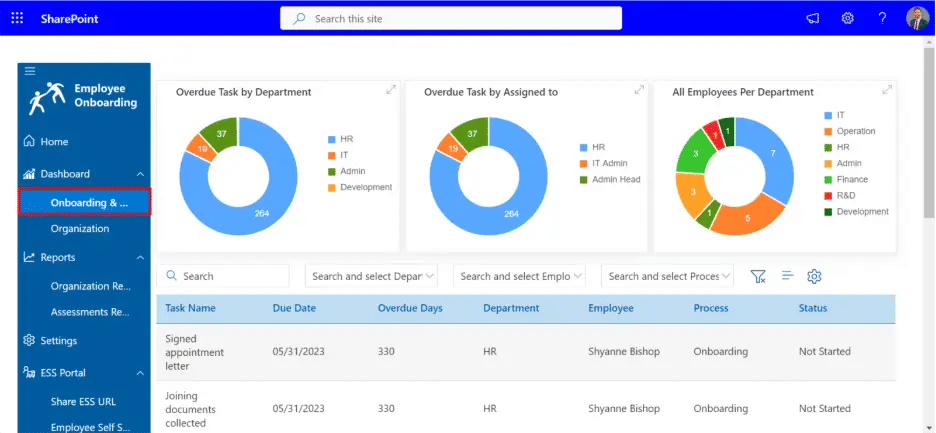
Automation not only streamlines administrative tasks but also provides consistency and efficiency. Automating repetitive tasks, such as document submission and training scheduling, allows HR teams to focus on more strategic aspects of onboarding.
This approach also reduces the time new hires spend on paperwork, giving them more time to focus on integrating into their sharepoint role and team. By following employee onboarding best practices and digitalizing onboarding, you ensure that no steps are missed and that the process is smooth and efficient for both HR and employees.
How to Implement It:
Use Digital Platforms
- Leverage digital platforms to collect necessary paperwork, tax forms, and compliance documents. This eliminates the need for manual data entry, saving time and minimizing errors.
- Integrate these platforms with HR systems so employee data automatically syncs across Teams, attendance, and benefits.
Automate Training Assignments
- Set up automated training modules that employees can complete at their own pace. This ensures a structured learning process and allows you to track progress easily.
- Include assessments or quizzes after each module to reinforce learning and identify areas where additional support is needed.
Set Up Reminders for Deadlines
- Use automation tools to set up reminders for important deadlines, such as benefits enrolment, safety training, or company-specific compliance requirements. Automated notifications ensure no critical tasks are overlooked.
- Send reminders through multiple channels (email, SMS, or app notifications) to increase visibility and reduce the chances of missing key steps.
Provide Access to Digital Resources
- Digitize handbooks, employee manuals, and company guidelines so new hires can access them anytime. This ensures that they have all the information they need right at their fingertips.
- Organize resources in an easily searchable format with categories, filters, and bookmarks for quick navigation.
Track Progress and Feedback
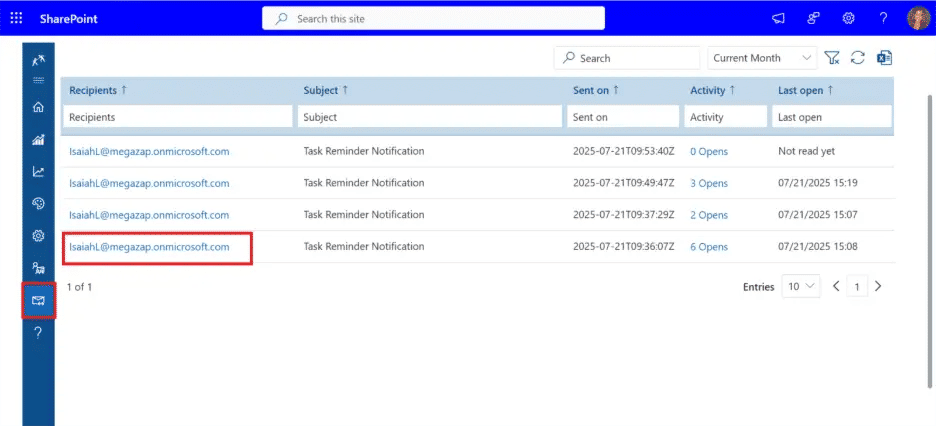
- Implement digital tools to track onboarding milestones and gather feedback from new hires about their experience. This data helps to continuously improve the process.
- Use dashboards and analytics to identify patterns like which training modules take longer so HR can optimize and simplify the journey.
Recommended read: https://www.apps365.com/blog/hr-best-practices/
3. Foster Early Connections
Research shows that new employees are more likely to stay long-term if they have strong social connections in their workplace. Fostering early connections between new hires and their team members, as part of employee onboarding best practices, can ease anxiety, help them build relationships, and boost engagement.
These early relationships not only make employees feel more comfortable but also accelerate their ability to understand and adapt to the company culture. When new hires feel supported, they are more likely to stay engaged and contribute to the company’s success.
How to Implement It:
Organize Virtual or In-Person Team Events
- Arrange virtual or in-person team lunches, coffee chats, or casual meetings where new hires can connect with their team in a relaxed environment. These informal settings promote open conversation and relationship building.
- Rotate activities (like team-building games or cross-department icebreakers) to keep events engaging and inclusive.
Introduce New Hires to Key Stakeholders
- Ensure new employees are introduced to key stakeholders across different departments. This helps them understand the broader organizational structure and gives them contacts they can reach out to for support.
- Provide a simple stakeholder map or contact sheet so new hires know who to approach for specific needs.
Set Up Online Social Spaces
- Create dedicated Slack channels, forums, or chat groups where new hires can interact with colleagues across teams. This fosters a sense of community, enabling employees to feel comfortable asking questions and exchanging ideas.
- Encourage casual themes (like hobby groups, wellness tips, or book clubs) to spark organic connections beyond work.
Pair New Hires with a Buddy or Mentor
- Assign a buddy or mentor from the team to guide the new hire through the initial weeks. This personalized support provides a point of contact for questions, helps the new hire feel more comfortable, and integrates them into the workplace culture.
- Offer basic mentorship guidelines so buddies know how to balance professional guidance with social support.
Host Virtual Meet-and-Greets with Leadership
- Arrange for the new hire to meet leadership or senior staff early on. It’s a great way for them to feel seen and valued, while also gaining insight into the company’s vision and leadership style.
- Add a short Q&A segment so new hires can engage directly and feel their voices are heard.
4. Offer Continuous Learning Opportunities
An ongoing learning culture ensures that new hires do not just feel like they are going through the motions during onboarding, but instead, see it as a launchpad for continuous development, aligning with client onboarding best practices.
This not only boosts employee engagement but also equips them with the skills they need to excel in their roles. By offering learning opportunities early on, you set the stage for long-term growth and foster a growth mindset within your team.
Employees who see the potential for development are more likely to stay committed and take initiative in their roles.
How to Implement It:
Offer Training and Development Resources from Day One
- Provide access to training materials, courses, or learning platforms from the first day of onboarding. Whether it’s role-specific training, company policies, or skill-building courses, these resources should be available to help the new hire feel empowered and confident in their role.
- Supplement formal training with short microlearning modules that employees can quickly absorb during their workday.
Set Up Mentorship Programs
- Create a mentorship or coaching program where employees can learn from more experienced colleagues. Mentors can share their insights, guide new hires through challenges, and help them build the skills needed to excel.
- Rotate mentors after a few months to expose new hires to different perspectives and leadership styles.
Encourage Regular Check-ins
- Schedule frequent check-ins during the onboarding period to discuss professional growth and any challenges the new hire is facing. These meetings can also be an opportunity to set new learning goals and provide constructive feedback.
- Document key takeaways from each check-in so both the manager and the employee can track progress over time.
Offer Access to Online Learning Platforms
- Give new hires access to relevant e-learning platforms or workshops that can help them grow their skills. Encouraging self-directed learning allows employees to progress at their own pace and stay ahead of industry trends.
- Curate recommended learning paths aligned with the new hire’s role to avoid overwhelming them with too many options.
Recognize and Reward Learning Milestones
- Celebrate learning achievements, such as completing training courses or mastering new tools, to show that the company values growth. Rewards or recognition can further motivate employees to continue developing their skills.
- Share milestone accomplishments in team meetings or newsletters to inspire others and foster a culture of learning.
5. Ensure Clear Expectations and Feedback
Setting clear expectations from the beginning is key to ensuring that employees know what success looks like in their new role. Following best onboarding practices, providing early and frequent feedback will also help them adjust and feel supported throughout their onboarding experience.
This transparency reduces anxiety and confusion, as new hires know exactly what is expected of them. Clear expectations also empower them to take ownership of their work and contribute confidently.
When employees understand their role and receive timely feedback, they are better equipped to succeed and grow in their positions.
How to Implement It:
Clearly Communicate Job Responsibilities and Performance Goals
- From day one, outline specific job duties and key performance indicators (KPIs). This helps new hires understand what they need to focus on and what success looks like in their role. Be specific and realistic with expectations.
- Provide written role guides or success roadmaps so employees can revisit expectations anytime without confusion.
Provide Feedback Early and Often
- Give constructive feedback regularly, particularly during the first few weeks, to guide new hires in their role. This will help them understand what they’re doing well and where they need to improve. Early feedback makes it easier for new hires to adjust quickly.
- Balance feedback with positive reinforcement to keep morale high and encourage continuous improvement.
Encourage Open Lines of Communication
- Create an open, two-way communication channel between new employees and their managers. Encourage new hires to ask questions and seek clarification, and ensure managers are approachable and available to support them. Regular communication helps build trust and ensures that any issues are addressed before they become obstacles.
- Provide multiple channels (chat tools, email, or one-on-one sessions) so employees can choose their preferred way to communicate comfortably.
Set Regular Check-ins
- Schedule frequent one-on-one meetings with new employees to review their progress, discuss challenges, and set new goals. These check-ins should be a space for feedback from both sides, so the new hire feels heard and supported.
- Use structured agendas during check-ins to ensure discussions stay focused and actionable, avoiding vague or repetitive conversations.
Celebrate Early Wins
- Acknowledge even small accomplishments early on to boost confidence. This recognition lets the new hire know they’re on the right path and reinforces positive behavior.
- Share these wins publicly within the team to foster motivation and highlight the employee’s contributions.
6. Provide a Structured Onboarding Plan
A well-organized, structured onboarding plan ensures that all aspects of the onboarding process are covered systematically and consistently. Without a clear plan, both the employee and the organization may miss important steps in the onboarding journey, leading to confusion or disengagement.
A structured approach not only sets clear expectations but also provides a roadmap that helps new hires stay focused and motivated.
This comprehensive plan helps streamline the process, ensuring that every aspect of the onboarding experience is aligned with the company’s goals and the employee’s success.
How to Implement It:
Create a Timeline for the First 30, 60, and 90 Days
- Design a detailed schedule for each phase of the onboarding process. The first 30 days should focus on orientation and understanding the company culture, the next 30 days should dive into role-specific training, and the final 30 days should include performance goals and integration into the team.
- Share this roadmap with the new hire in advance so they know what to expect and can mentally prepare for each stage.
Include Key Activities and Training Sessions
- Ensure the plan includes essential training sessions such as company policies, compliance, job-specific skills, and software or tools training. Also, incorporate team-building activities and any necessary product or service knowledge training.
- Supplement training with interactive formats like workshops, simulations, or shadowing sessions to enhance engagement and retention.
Assign Responsibilities to Team Members
- Make sure that various team members are responsible for specific parts of the onboarding process. For example, HR can handle benefits and policy training, while the team lead may be responsible for role-specific training. This ensures that each aspect of the process is given the attention it deserves.
- Provide those responsible with a checklist or framework so onboarding tasks are consistent, and nothing is overlooked.
Set Clear Milestones
- Establish clear milestones for each phase of the onboarding process. These can be linked to training completions, key tasks, or performance reviews, giving new hires concrete goals to work toward.
- Review milestones in regular check-ins with managers to keep progress on track and address any gaps early.
Offer Flexibility for Personalization
- While the plan should be structured, allow room for flexibility to tailor the experience to the individual’s needs. For instance, if a new hire comes with prior experience in certain areas, they may be able to move more quickly through specific training modules.
- Collect feedback throughout the process to adjust the plan in real time, ensuring the onboarding feels both structured and personalized.
7. Measure and Optimize Onboarding Effectiveness
Measuring the success of your onboarding program is essential to ensuring that it continues to improve over time. By tracking key metrics and collecting feedback, you can refine your process to meet the evolving needs of your workforce. Regularly assessing the effectiveness of onboarding allows you to identify areas of improvement, ensuring that new hires have the best possible start. Continuously optimizing the process ensures that it remains aligned with organizational goals and adapts to changes in company culture, technology, or industry standards.
How to Implement It:
- Gather Feedback from New Employees: After each onboarding phase, collect feedback from new hires about their experience. This could be through surveys, interviews, or informal check-ins. Pay attention to any challenges they faced and areas where they felt the process was lacking.
- Use Metrics like Time-to-Productivity and Employee Retention: Track metrics such as the time it takes for new hires to become fully productive and their retention rates. These data points help measure how well the onboarding process is setting up employees for success and how engaged they are with the organization in the long term.
- Continuously Refine the Process Based on Feedback and Data Insights: Regularly review feedback and performance metrics to identify patterns and areas for improvement. For instance, if multiple new hires report feeling unprepared for certain tasks, update your training materials or adjust the timeline of your onboarding process to address these gaps.
- Benchmark Against Industry Standards: Compare your onboarding program to industry best practices to ensure that it remains competitive. This can highlight opportunities to innovate or add new elements to your onboarding strategy that are working well elsewhere.
Monitor Employee Engagement and Satisfaction: Use engagement surveys and performance reviews to measure how well employees are adapting to the company culture and their role. High levels of satisfaction and engagement typically correlate with a successful onboarding process.
Conclusion
A successful onboarding process is essential for boosting employee engagement, retention, and overall productivity. It sets the foundation for new hires to feel welcomed, supported, and prepared to contribute effectively from day one.
To see how employee onboarding software can simplify and enhance your onboarding experience, book a demo today. By following these best practices, your organization can ensure new employees are empowered, engaged, and aligned with your company’s culture for long-term success.
Join Our Creative Community
Frequently Asked Questions
Why is personalized onboarding important in onboarding best practices?
Personalized onboarding is one of the most effective onboarding best practices because it helps employees feel valued and connected from the start. By tailoring the process to their role, background, and preferences, companies can foster trust, improve morale, and achieve higher retention.
How does automation support employee onboarding best practices?
Automation is a key part of employee onboarding best practices as it streamlines paperwork, compliance, and training scheduling. This not only saves time and reduces errors but also ensures consistency while freeing HR to focus on strategic aspects of onboarding like mentoring and engagement.
What are the best onboarding practices for helping employees build early connections?
One of the best onboarding practices for improving engagement is fostering early connections. Employers can arrange team events, introduce new hires to stakeholders, set up online communities, or assign buddies. These practices reduce anxiety, accelerate integration, and strengthen workplace culture.
How can continuous learning opportunities enhance onboarding best practices?
Continuous learning is a vital part of modern onboarding best practices because it sets the stage for long-term employee growth. Providing training, mentorship, and e-learning access from day one encourages professional development, keeps employees motivated, and aligns them with organizational goals.
How can organizations measure the success of employee onboarding best practices?
Measuring success is crucial for employee onboarding best practices. Companies should track time-to-productivity, retention rates, and engagement while also collecting feedback from new hires. These insights allow HR teams to optimize and improve the onboarding journey over time.


_mVFFaHUZhS.webp)


_JiluXJRGNl.svg)



















